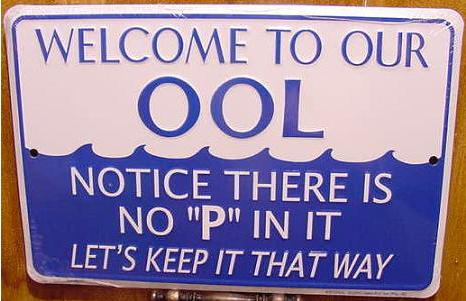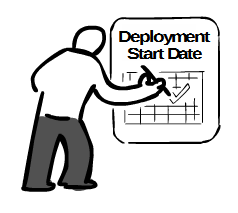 I've recently been paying more attention to signs and indicators. Though Stop signs or Yield signs are a given, I'm talking signs that you find around homes (Welcome to our ool. Notice there is no "P" in it. Let's keep it that way) and businesses (Drink coffee. Do stupid things faster with energy).
Last night, I attended the monthly APLN DC (Washington DC Chapter of the Agile Project Leadership Network). When friend and colleague Manoj Vadakkan kicked off the event last night, he announced that both the name (APLN) and logo had changed. It will now be known as the Agile Leadership Network. After telling people for the last few years that they could leverage agile principles and values in areas other than software development or just projects, I'm happy to see the change. It should certainly help reinforce concepts like servant-leadership, outside of the application development world. I went to the "new" ALN website and read a message on behalf of the board of directors.
I've recently been paying more attention to signs and indicators. Though Stop signs or Yield signs are a given, I'm talking signs that you find around homes (Welcome to our ool. Notice there is no "P" in it. Let's keep it that way) and businesses (Drink coffee. Do stupid things faster with energy).
Last night, I attended the monthly APLN DC (Washington DC Chapter of the Agile Project Leadership Network). When friend and colleague Manoj Vadakkan kicked off the event last night, he announced that both the name (APLN) and logo had changed. It will now be known as the Agile Leadership Network. After telling people for the last few years that they could leverage agile principles and values in areas other than software development or just projects, I'm happy to see the change. It should certainly help reinforce concepts like servant-leadership, outside of the application development world. I went to the "new" ALN website and read a message on behalf of the board of directors.
In keeping with the agile spirit, APLN has continued to evolve since its inception. Over the last year or so, the national board has had an ongoing discussion about “getting the ‘P’ out”. That’s ‘P’ as in ‘Project’; as in Agile ‘Project’ Leadership Network. Why do that?
As agile practices for software development projects have become more prominent, broader application of agile principles and values has come more to the forefront. It is not that we no longer want to talk about these projects; we do and will. But we also want to talk about more than projects and we think the 10-year anniversary of the Agile Manifesto is an appropriate milestone to recognize that evolution.
Let this be notice to everyone out there to start updating their websites or documents listing APLN.



